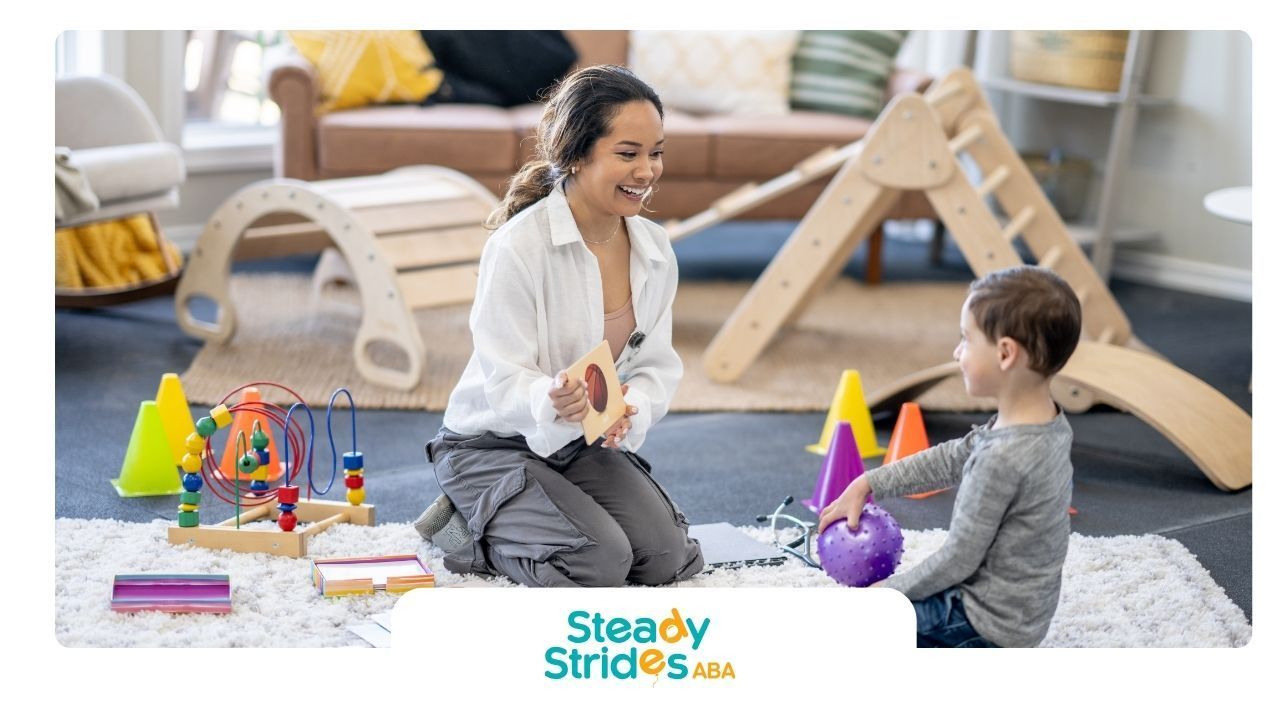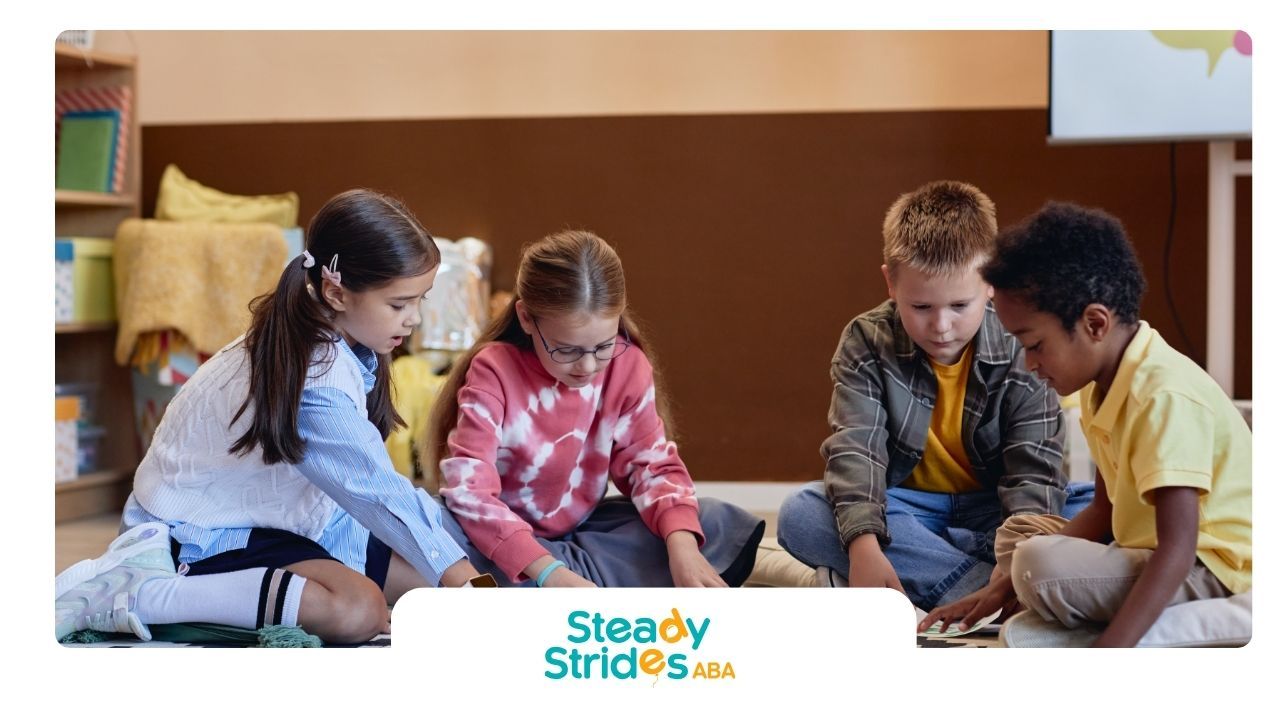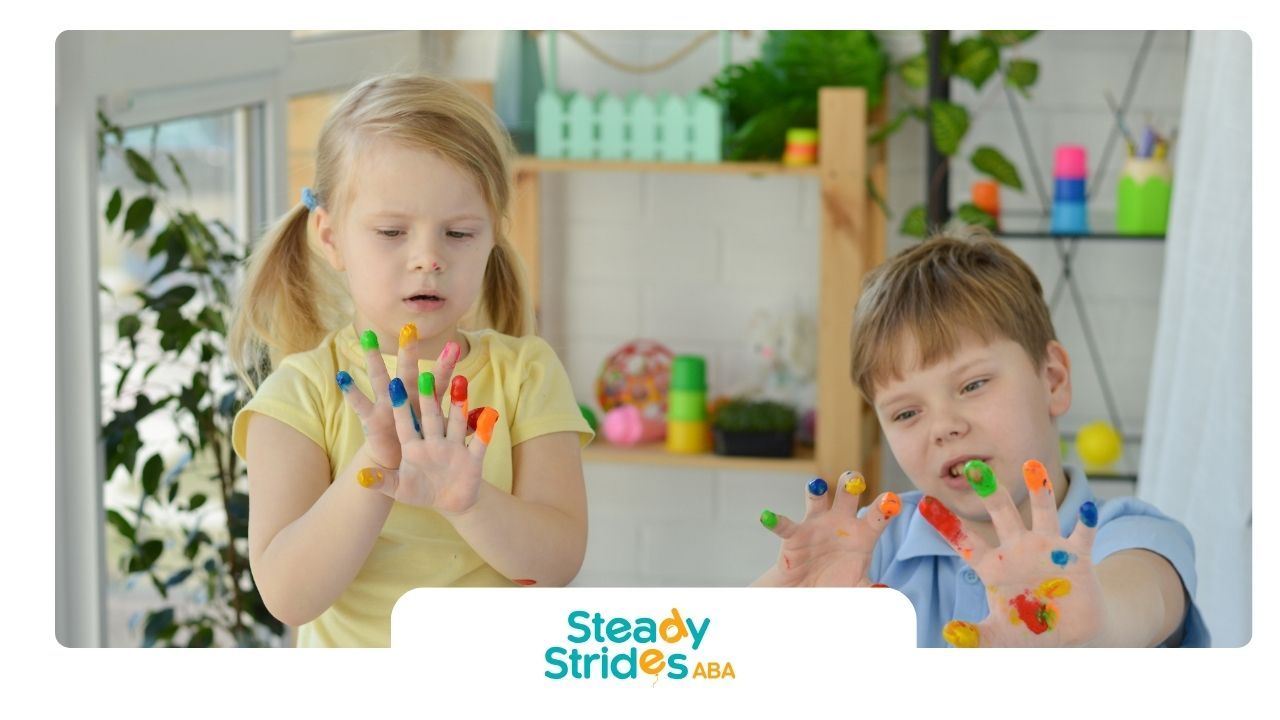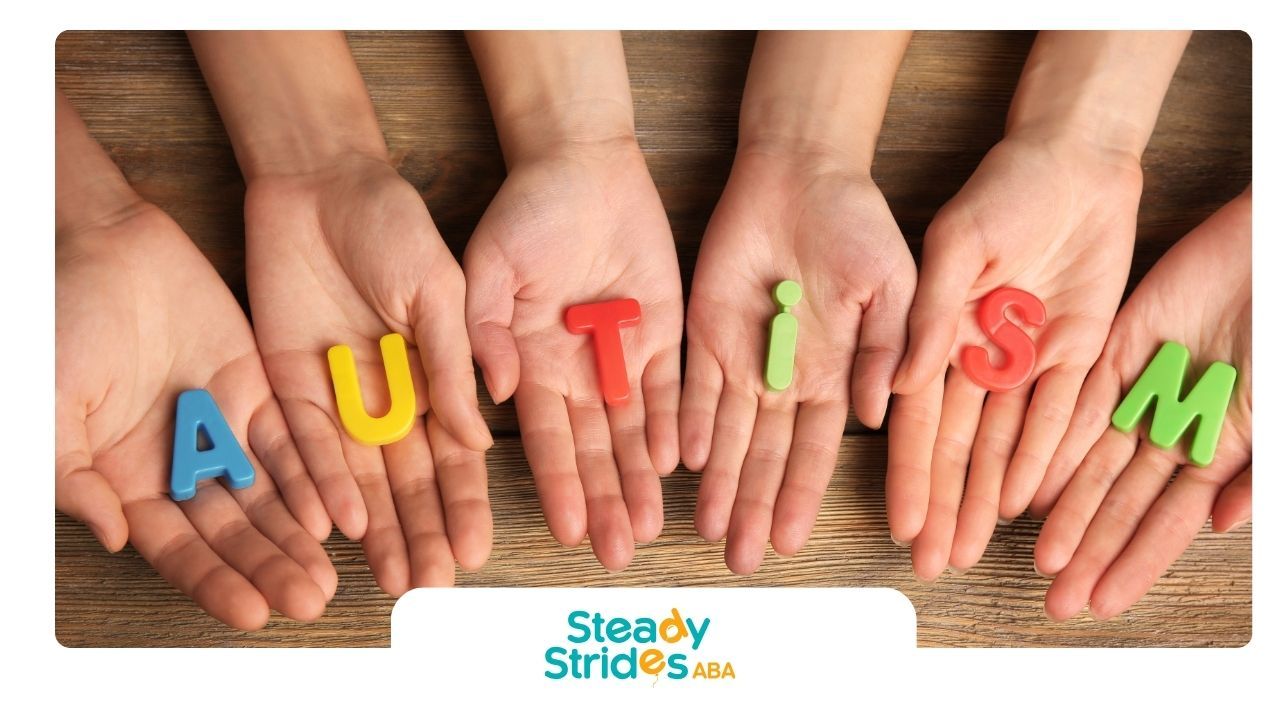Navigating social situations can be challenging for children on the autism spectrum. Have you ever wondered how to make these experiences less stressful and more predictable for your child? Social stories are a powerful and friendly tool used within ABA therapy to do just that. These simple, personalized narratives help describe social expectations and routines in a clear, reassuring way, fostering greater understanding and confidence in children with autism. Let's explore how they work.
Overview of ABA Therapy and Social Stories
To see how social stories fit into the picture, it helps to understand Applied Behavior Analysis (ABA) therapy. ABA is a well-researched treatment for the autism spectrum that has been helping children since the 1960s. It uses evidence-based methods to improve skills and behaviors.
Within this framework, social stories serve as a valuable tool. Developed by Carol Gray, they are used in therapy sessions to adress clear, narrative way to explain social situations and teach appropriate responses, making them an essential part of a comprehensive ABA program.
Key Principles of ABA Therapy in the United States
Applied Behavior Analysis (ABA) therapy is recognized as a best practice treatment by the US Surgeon General. The core of ABA therapy lies in its use of positive reinforcement. This means that desired behaviors and new skills are rewarded, which encourages the child to use them more often. This focus is on building skills, not just eliminating behaviors.
Modern ABA therapy has evolved significantly from its early days. While past practice sometimes included punishment, contemporary ABA no longer uses these techniques. Instead, the emphasis is on understanding why a behavior occurs and teaching a more appropriate alternative. This positive approach helps individuals with autism develop independence and improve their quality of life.
The effect of social stories is amplified when combined with these principles. By presenting social cues and desired social skills in a supportive narrative, social stories work alongside ABA's positive reinforcement methods. A Board Certified Behavior Analyst (BCBA) designs and oversees these programs, ensuring they are tailored to each child's unique needs.
Defining Social Stories and Their Purposes
So, what exactly are social stories? Created by Carol Gray in the early 1990s, they are simple, personalized narratives that describe social situations in a clear and respectful way. They aim to provide information that can guide and reassure a child, helping to reduce anxiety and promote positive behaviors. Each story is written from the child's perspective to make it relatable.
The primary purpose of a social story is to teach social cues, routines, and rules. They can be used to prepare a child for a new experience, like a trip to the dentist, or to explain specific behaviors, like how to share new toys. By using affirmative sentences, the stories focus on what the child can do in a given situation.
What makes a social story effective in the context of ABA therapy? Their effectiveness comes from their structure and personalization. They are an effective tool for teaching new skills because they break down complex social information into manageable parts, often with visual supports. This makes them a gentle yet powerful way to foster social learning and mutual understanding.
How Social Strategies Support Children with Autism
For children with autism spectrum disorder, social stories offer a practical way to improve social skills and encourage positive behaviors. These narratives make abstract social concepts more concrete and understandable, helping children navigate what can often be confusing social situations. They provide a roadmap for what to expect and how to respond.
The beauty of social stories in ABA therapy is their personalized nature. They are not one-size-fits-all. Instead, they are tailored to a child's specific experiences and challenges, making the information more meaningful and easier to absorb. In the next sections, we'll look closer at how they help develop social skills and address difficult behaviors.
Role of Social Stories in Developing Social Skills
A major focus of ABA therapy is building essential social skills, and social stories are a cornerstone of this effort. How do they help? By describing a social situation in detail, a social story gives a child a preview of what to expect. This preparation helps them feel more confident entering group activities or engaging in one-on-one conversations.
These stories often break down complex interactions into simple steps. For example, a story might explain how to join a game on the playground or how to take turns during a conversation. This helps improve communication skills and teaches the nuances of appropriate social interactions that might not be obvious to a child with autism.
By repeatedly reading these stories, children can practice and internalize these new skills. The narrative format helps them understand the perspectives of others and learn what responses are expected in various social contexts. This builds a foundation for more positive social experiences and stronger relationships with peers.
Addressing Challenging Behaviors Through Social Stories
Social stories are also a proactive way to address challenging behaviors. Instead of waiting for a problem behavior to occur, these stories can be used to teach an alternative, more appropriate action ahead of time. This approach aligns perfectly with the principles of behavior analysis, which focuses on teaching and reinforcing positive skills.
How do therapists create social stories that address specific behaviors in ABA programs? First, an ABA therapist identifies a behavior to target. Then, they write a story that describes the situation where the behavior often occurs and models a better way to respond. For example, if a child gets upset by loud noises, a story can explain what the noise is and offer calming strategies.
These social story interventions work by providing clarity and predictability. They can be used to address a wide range of behaviors, such as:
- Preparing for transitions between activities.
- Teaching how to ask for a break instead of getting frustrated.
- Explaining the importance of personal space.
- Modeling how to wait patiently for a turn.
Core Components of Effective Social Stories
What transforms a simple narrative into one of the most effective social stories? It's all about the structure and the types of sentences used. Effective stories balance descriptive sentences, which explain the "who, what, when, where, and why" of a situation, with directive sentences that gently suggest appropriate responses.
This formula helps a child understand the context of social cues, like eye contact or personal space, before being guided on how to react. The story is supportive, not demanding. The following sections will break down these elements further and explain how to distinguish social stories from similar tools.
Elements That Make a Social Story Effective in ABA Therapy
Several key elements contribute to making a social story an effective tool in ABA therapy. First and foremost, the story must use simple language that matches the child's level of understanding. The tone should always be positive and reassuring, focusing on what to do rather than what not to do. Including perspective sentences that describe the feelings or thoughts of others can also build empathy.
Visual supports are another critical component. Pictures, drawings, or symbols help make abstract concepts more concrete for visual learners. What makes a social story effective is this combination of clear text and helpful images, all personalized to the child's own experiences. A well-written story is respectful, patient, and tailored to be as meaningful as possible.
These components work together to create a powerful teaching tool. Here is a summary of what makes social stories in ABA therapy impactful:
| Component | Description |
|---|---|
| Simple, Literal Language | Uses words and sentence structures that match the child’s understanding to avoid confusion. |
| Visual Supports | Includes pictures, photos, or illustrations to make social concepts more accessible and engaging. |
| Positive & Respectful Tone | Focuses on positive behaviors and maintains a reassuring, supportive tone throughout the narrative. |
| Personalized Contentc | Is tailored to the child's specific experiences, needs, and interests to make it more relatable. |
Distinguishing Between Social Stories and Social Narratives
You may hear the terms "social story" and "social narrative" used, and it can be confusing. What is the difference between social stories and social narratives in ABA therapy? Think of "social narrative" as a broad category of stories that describe social situations to help with social skill deficits.
A Social Story™, however, is a specific type of social narrative that follows a particular structure and criteria developed by Carol Gray. These stories have a defined ratio of sentence types (descriptive, perspective, directive) and must adhere to a respectful, supportive tone. They are carefully crafted to provide accurate information and guide appropriate responses.
While any story that explains a social situation can be called a social narrative, a true Social Story™ is a more refined tool. It is designed to ensure the information is presented in the most effective way to improve a child's understanding of social norms, prepare them for new experiences, and promote positive social interactions.
Creating and Tailoring Social Stories in ABA Programs
One of the greatest strengths of social stories is their adaptability. In ABA programs, a one-size-fits-all approach is rarely effective. That is why creating a personalized story is crucial. Tailoring the narrative to the individual needs and experiences of young clients makes the teaching methods far more impactful.
This customization ensures that the story resonates with the child, addressing the specific situations and challenges they face. Whether it's a story about a classroom routine or a family outing, personalization is key to helping the child connect with the material and apply it to their life. The next sections will detail how to write these stories and offer common examples.
Steps for Writing Personalized Social Stories
How do therapists create social stories that address specific behaviors in ABA programs? The process begins with careful observation and planning. A therapist or parent first identifies a specific goal, whether it's understanding a social rule or preparing for a new event. Then, they gather information about the situation from the child's point of view.
Writing a personalized story involves using simple, literal language. It's important to include a mix of sentence types, such as descriptive sentences to set the scene, perspective sentences to explain others' feelings, and a limited number of directive sentences to gently guide behavior. Remember to maintain a positive and reassuring tone throughout the narrative.
For visual learners, adding photos or simple drawings that illustrate the steps in the story is incredibly helpful. The process can be summarized in these steps:
- Identify the Goal: Choose a single, clear topic for the story.
- Gather Information: Understand the situation and the child's perspective.
- Write the Story: Draft the narrative using a positive tone and a mix of sentence types.
- Add Visuals: Include relevant pictures or drawings to enhance understanding.
Examples of Frequently Used Social Stories in ABA Therapy
Can you give examples of social stories commonly used in ABA therapy for children? Absolutely. These stories often target everyday social challenges and routines. By providing clear expectations, they help children practice appropriate behaviors in a safe, predictable way.
For instance, a story might focus on navigating sensory sensitivities. A narrative about loud noises could explain that a fire drill alarm is loud but keeps everyone safe, and it will be over soon. This helps reduce anxiety by giving context to the experience. Other stories might focus on social skills like making eye contact or waiting for a turn.
Here are a few common examples used in ABA therapy sessions:
- Sharing Toys: A story that explains how to ask a friend to share and how to respond if the friend says yes or no.
- Going to the Dentist: A narrative that walks through each step of a dental visit to reduce fear of the unknown.
- Following Instructions: A story that models listening to a teacher or parent and following directions.
- Personal Space: A story that explains what personal space is and why it's important to give others room
Collaborative Use of Social Stories by Parents and ABA Professionals
The success of social stories in ABA therapy is greatly enhanced when there is strong collaboration between parents and ABA professionals. This partnership ensures that the child receives consistent messages and support in all environments, whether at the clinic, at home, or in the community.
When professionals and parents work together, the implementation of social stories becomes a seamless part of the child's daily routine. This teamwork helps reinforce the skills being taught in therapy sessions, leading to faster progress and better generalization. Let's explore some strategies for making this collaboration work.
Strategies for Home and Clinical Implementation
How do parents and ABA professionals work together to use social stories effectively? Communication is the first step. ABA therapists can share the social stories they are using in therapy sessions with parents, who can then use the same stories at home. This consistency is vital for reinforcing new skills.
For home implementation, it's helpful to read the social story with your child at a calm time, well before the social situation occurs. This gives them time to process the information. In ABA therapy, a therapist might role-play the situation described in the story or use it to prepare a child for group activities.
Here are some practical strategies for successful implementation:
- Create a Routine: Read the social story at a consistent time each day or before a specific event.
- Keep it Positive: Present the story as a helpful guide, not a list of rules to be memorized.
- Review and Revise: Work with your therapist to update stories as your child's skills grow.
- Share with Others: Provide copies of relevant stories to teachers, grandparents, or other caregivers.
Accessing Reliable Social Story Resources and Libraries
Are there free resources or libraries of social stories for ABA therapists and parents? Yes, there are many excellent social story resources available. Many organizations dedicated to autism and special education offer free libraries of pre-written stories that you can download and adapt for your child's needs.
Your child's ABA therapist is also a fantastic resource. They can create custom stories tailored to your child's specific goals and challenges. Professionals in the field of developmental disabilities often have access to extensive collections of stories and can guide you to the most appropriate ones for your situation.
When looking for resources, consider these options:
- Autism-focused websites: Organizations like Autism Speaks offer collections of teaching stories.
- Educational resource sites: Websites for teachers and special education professionals often have free social story templates.
- Your therapy provider: Ask your ABA center for their recommended resources or custom stories.
- Online parent communities: Many parents share stories they have created for their own children.
Conclusion
In summary, effective social stories can significantly enhance the outcomes of ABA therapy for children with autism. By incorporating key principles of ABA, these tailored narratives provide essential support in developing social skills and addressing challenging behaviors. The collaborative effort between parents and professionals is crucial to ensure that social stories are not only personalized but also implemented consistently across various settings. As you explore the resources available, remember that each child's needs are unique, and adapting social stories accordingly can lead to meaningful progress. If you're interested in learning more about how to implement social stories effectively, don’t hesitate to reach out for a free consultation!
At Steady Strides ABA, we know that understanding the world starts with understanding stories. Serving families across Texas and New Mexico, our team uses social stories as a powerful ABA tool to help children navigate real-life situations with confidence and clarity. From learning how to make friends to handling new environments, each story is designed to teach important social and emotional skills in a way that feels relatable and empowering. At Steady Strides ABA, we don’t just teach social skills—we help children write their own stories of growth, connection, and success.
FAQs
Do social stories really help change behavior in children receiving ABA therapy?
Yes, numerous studies show the effectiveness of social stories in changing behavior. When used as part of a behavior analysis plan in ABA therapy, they can reduce inappropriate behaviors and increase social understanding. The effect of social stories is often greatest when they are personalized and include visual supports.]
How can social stories be used to prevent problem behaviors in kids with autism?
Social stories can prevent a problem behavior by preparing a child for a potentially stressful situation ahead of time. By explaining what will happen and modeling positive behaviors, the story reduces uncertainty and anxiety, making it less likely that a child on the autism spectrum will resort to challenging behaviors.
What are the main goals of using social stories in pediatric ABA therapy sessions?
The main goals are to teach new skills and address social skill deficits. In ABA therapy sessions, social stories are used to improve a child's understanding of social cues, prepare them for new experiences, and teach them appropriate ways to interact with others, ultimately building their confidence and independence.
Sources:
- https://www.autismspeaks.org/what-autism
- https://www.autismspeaks.org/applied-behavior-analysis
- https://www.autism.org.uk/advice-and-guidance/what-is-autism
- https://www.apa.org/topics/anxiety













